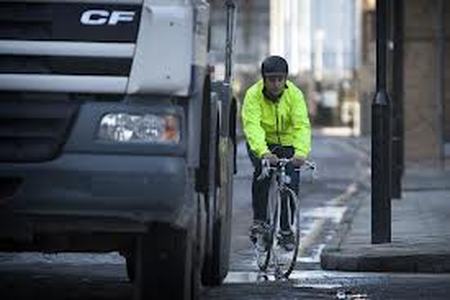To protect the growing number of vulnerable road users in Dublin city, Dublin City Council is to introduce new 30Km/h speed limit zones. New zones with the lower 30Km/h will be introduced in three phases, with the first phase starting on the 27th of March followed by the second phase, on the 29th of May. The start date and the zone to be designated in the final phase has yet to be agreed.
Professional drivers operating in Dublin city, will welcome the new speed limits. It is designed to reduce the risk and the severity of accidents. The ever increasing number of cyclists and the increase in the number of pedestrians and tourists visiting Dublin are all very welcome as they support a healthier society and more vibrant capital city.
While some drivers may feel that more should be done to educate cyclists and pedestrians, professional drivers will be very much aware that colliding with such vulnerable road users can have very serious consequences for all involved, regardless of fault. Slower speeds give drivers and the vulnerable more time to react to situations and also reduce the severity of impact when accidents happen.
We must remember that these are roads in a capital city, full of people enjoying the experience of what a great city like Dublin has to offer. As professional drivers, we must be conscious that cyclists and pedestrians may not be aware of the dangers that a HGV or coach can pose. Tourists can easily step out in front of you as they may be accustomed to looking left when crossing the road. It is up to us to be extra vigilant when driving in the city, it is an extremely dangerous place to operate a heavy vehicle. Give the vulnerable the time and space to make mistakes and we will all go home in one piece at the end of the day.
There will be arterial routes through the city that will remain at 50 Km/h. The council have provided a map showing these routes. Roads indicated in white on the map running through the 30 Km/h zones are the arterial routes and will remain at their current speed limits. The speed limit in Dublin City Council area is 50 Km/h unless otherwise stated. If you are driving in the city get a copy of the map printed off for your cab and familiarise yourself with the 30Km/h zones.
Professional delivery drivers working in the city will have to take extra care during the initial introduction phase of the reduced speed limits. Driving at the reduced 30 Km/h speed limit will take a little bit of getting used to, so practice will make perfect. Your unconscious attention will currently regulate your speed at 50 Km/h, so you will have to recondition yourself to set your default speed to 30 Km/h. Again it will just take a few days of practice before you will default to the lower 30 Km/h limit. Remember penalty points, regardless of how you got them, will remain on your licence for three years. Some firms are not able to get insurance on drivers who have more than six penalty points so watch your speed at all times. A 30 Km/h sticker on your dash board may help you focus, or put a piece of red tape on the odometer at the 30Km/h mark.
The new 30 Km/h will become enforceable as soon as the new signs are displayed. An Garda Siochana and Go Safe will be able to enforce the new speed limits from that time. At the moment Dublin City Council are installing new poles to house the new signage. There will be a new 30 Km/h sign at every junction from the arterial routes entering the 30 Km/h zone. Subsequently on exiting the 30 Km/h zone there will be a sign indicating what the speed limit is on the arterial route that the vehicle is joining, thus keeping the motorist fully informed.
The only speed limit signage that will be erected to inform motorists that they are entering a 30 Km/h zone is the speed limit sign at the point of entry. There will be no additional road marking to inform of the 30 Km/h zones. There will be no illuminated signage informing of the 30 Km/h zones. There will be no signage informing motorists that they are driving on an arterial route. The speed limit may change on an arterial route, and, if this is the case a speed sign will be in place warning of the new speed limit, if not then the speed limit of 50 Km/h applies.
Closer to the time of the 30 Km/h zones coming on stream a media campaign will be coordinated through the Dublin City Council media office, with a press release going out to radio, print, and TV outlets covering the details of the new speed restriction.
Click on the link to view the map:
